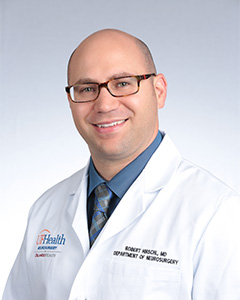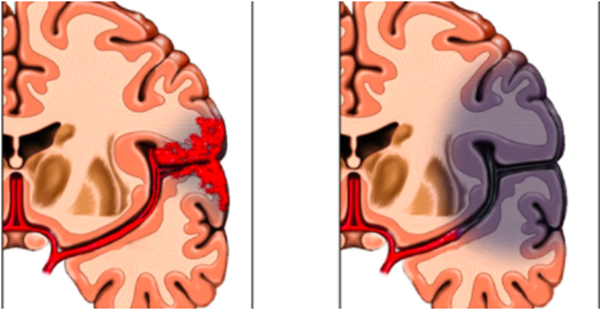Every 40 seconds, someone in the U.S. has a stroke.
Stroke can occur in one of two ways: when a blood vessel in the brain ruptures (hemorrhagic stroke) or when a clot blocks blood flow to the brain (ischemic stroke). The condition is often associated with seniors, but a recent study indicates the risk of stroke in young people is increasing.
In the study, published in JAMA Neurology, researchers reviewed hospitalization data from a national database to determine the number of stroke-related hospital stays in people age 18 to 64.
Comparing data from 2003-2004 through 2011-2012, researchers found the number of young people who had a stroke increased for both men and women. However, the increase was most significant in men — stroke risk increased by 41.5 percent in men age 35 to 44 during the period researchers tracked.
The study also found that patients continued to have significant risk factors for stroke from 2003-2004 through 2011-2012. The rates of risk factors like hypertension (high blood pressure), diabetes, smoking, high cholesterol and obesity all increased during the period researchers tracked. And while rates of ischemic stroke increased in young people, rates of hemorrhagic stroke remained stable in most groups, the study found.
Preventing Stroke in Young People
Death rates for stroke have decreased in recent decades, but much of this trend has been driven by older adults. At the same time, we’ve seen a small, but growing increase in younger people with this condition. I’ve seen this firsthand in my practice. We’re seeing more younger patients than we did in the past (those 50 or under). However, the majority of patients we treat for this condition are still elderly.
The study shows we need to increase prevention efforts among young people. Regardless of age, the risk factors for stroke are the same. They include high blood pressure, high cholesterol, Type 2 diabetes, smoking, any vascular disease or cardiac disease. Heart valve issues are another risk factor for stroke, because you can have clots that can go to the brain. Abnormal heart rhythms, especially in patients with atrial fibrillation, also can increase stroke risk.
Prevention is the best cure, and this typically involves annual visits to your primary care doctor, who can screen you for conditions, like high blood pressure. Avoiding a sedentary lifestyle and getting regular exercise and eating a well-balanced diet also are critical. These things can lower your risk for obesity and diabetes — two other stroke risk factors.
Prevention is key, but it’s also important to understand the symptoms of stroke if you already have one or more of these risk factors. If you experience symptoms like numbness in the limbs, dizziness, trouble speaking, blurred vision or a sudden, unexplained headache, go to the emergency room right away.
We can best treat stroke when it’s diagnosed quickly. The faster we treat a patient, the better their long-term outcome. Younger patients also may have an advantage in this regard because they typically have a better ability to recover and heal.
Stroke is the fifth leading cause of death in the U.S., and is largely preventable by addressing risk factors like smoking, diabetes, high blood pressure, high cholesterol and obesity. This condition can be life-altering and debilitating for many patients if it isn’t treated immediately, so whether you’re young or old focus on prevention to lower your risk.
Are you interested in learning more about our Comprehensive Stroke Program?
Our neurologists will treat your complex stroke using the latest technology and research based on a complete diagnosis that may involve brain scans and neurological evaluations. We may recommend clot-busting drugs or neurosurgery and will work with you throughout your recovery. If you have not yet had a stroke but are at risk for one, we offer preventative strategies to reduce your risk.
Request an Appointment Today





